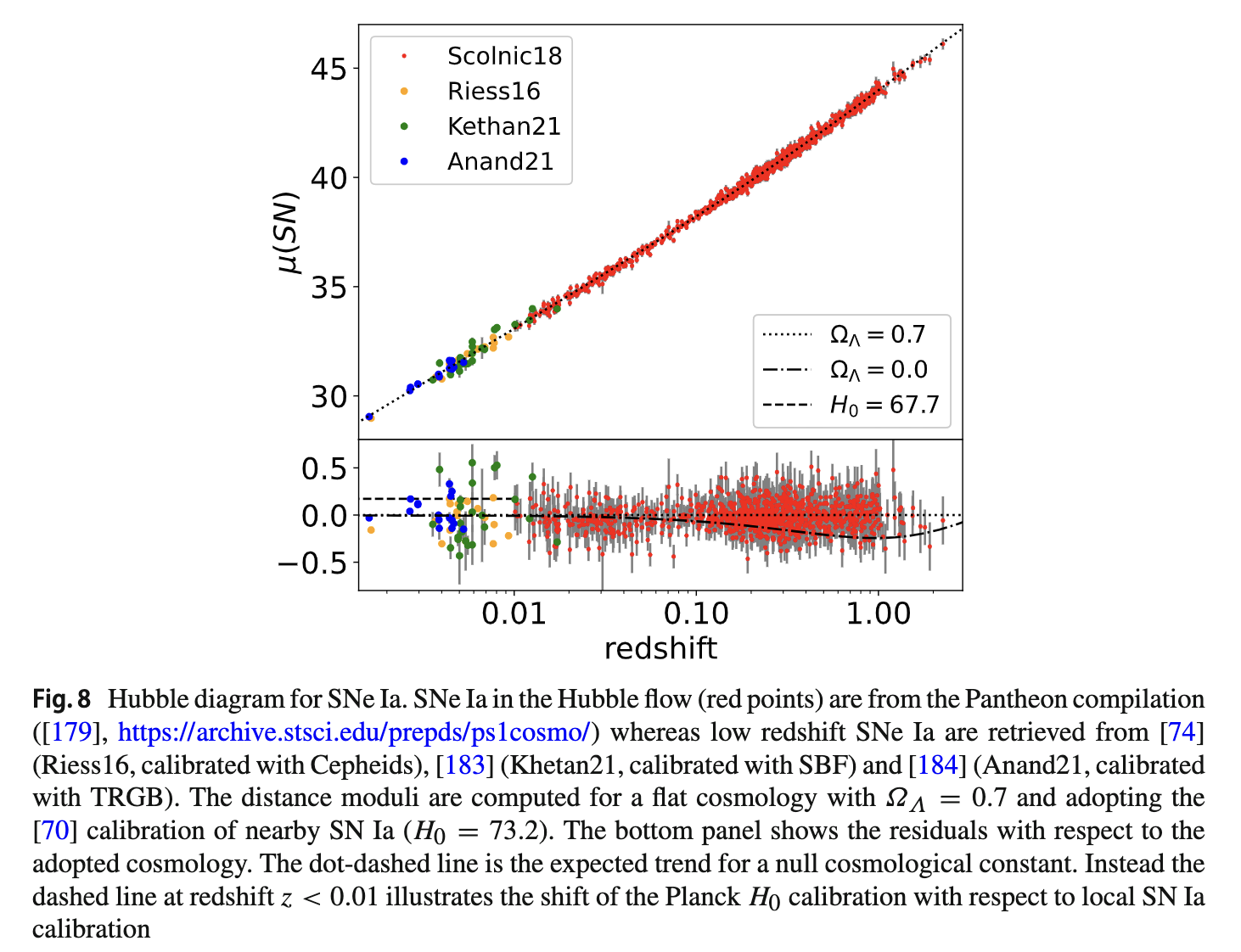Padova-Asiago Supernova Group
Highlights
Supernovae and their cosmological implications
E. Cappellaro 2022 La Rivista del Nuovo Cimento (link to pdf)
Supernovae (SNe) are luminous optical transients, which, despite being rare events in a single galaxy, nowadays are discovered at a rate of ten per day. They populate a growing zoo of different types linked to a variety of progenitors and explosion mechanisms. Through a biased selection of a century of researches, I will review how SNe have became a leading tool to probe the cosmic expansion. I will mainly focus on SNe of type Ia, originating from the thermonuclear explosion of white dwarfs, that were demonstrated to be excellent distance indicators after proper calibration and standardisation. Two decades ago, SNe Ia provided the surprising result that the cosmic expansion is accelerated by a misterious dark energy. Recently, with the decisive contribution of Cepheids variables as primary distance indicators, SN Ia allowed to measure the value of the Hubble-Lemaitre constant, H0 , with an error of only 1%. It turned out that the value of H0 based on SNe Ia is in tension with the one measured through the fit of the CMB fluctuations. If confirmed, this finding requires a deep revision of the standard cosmological model. 227
